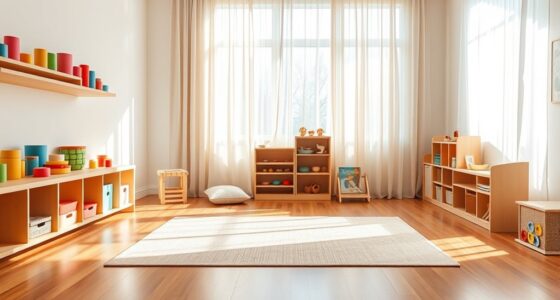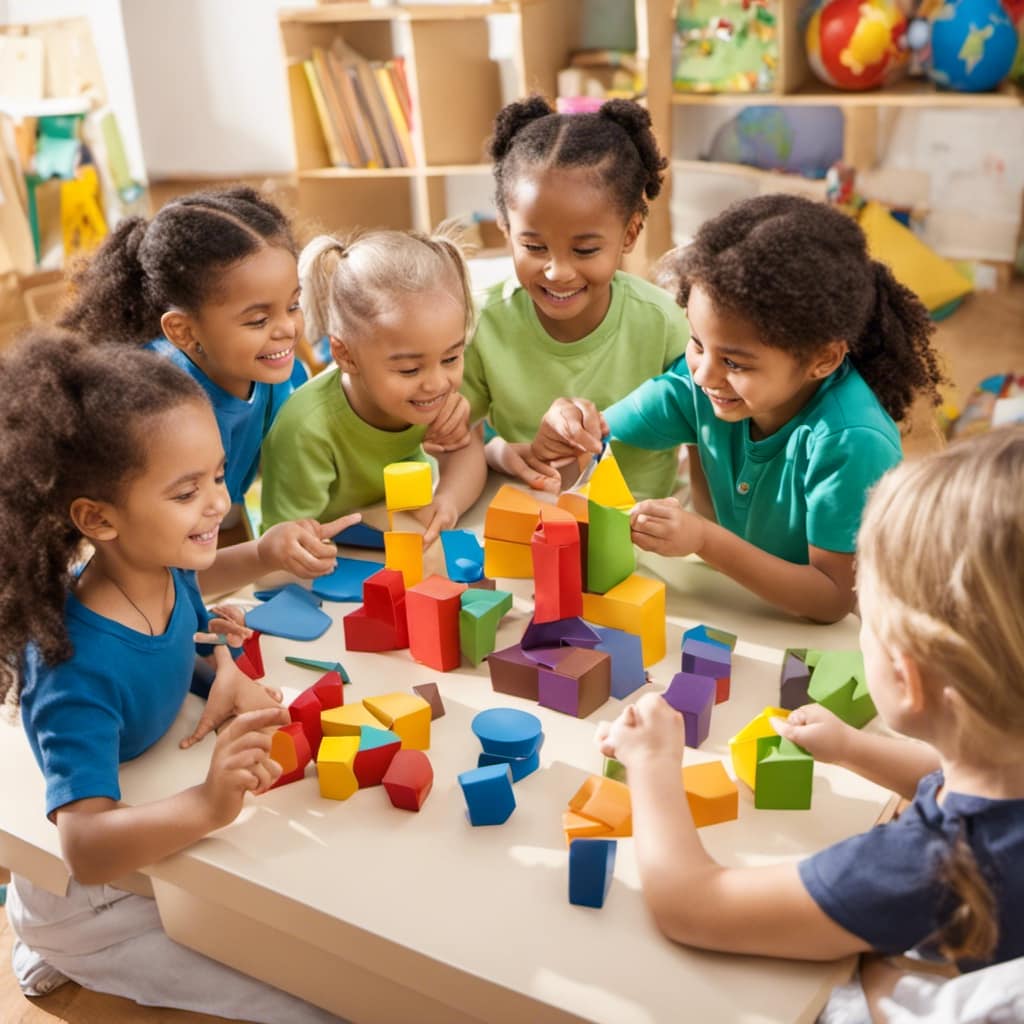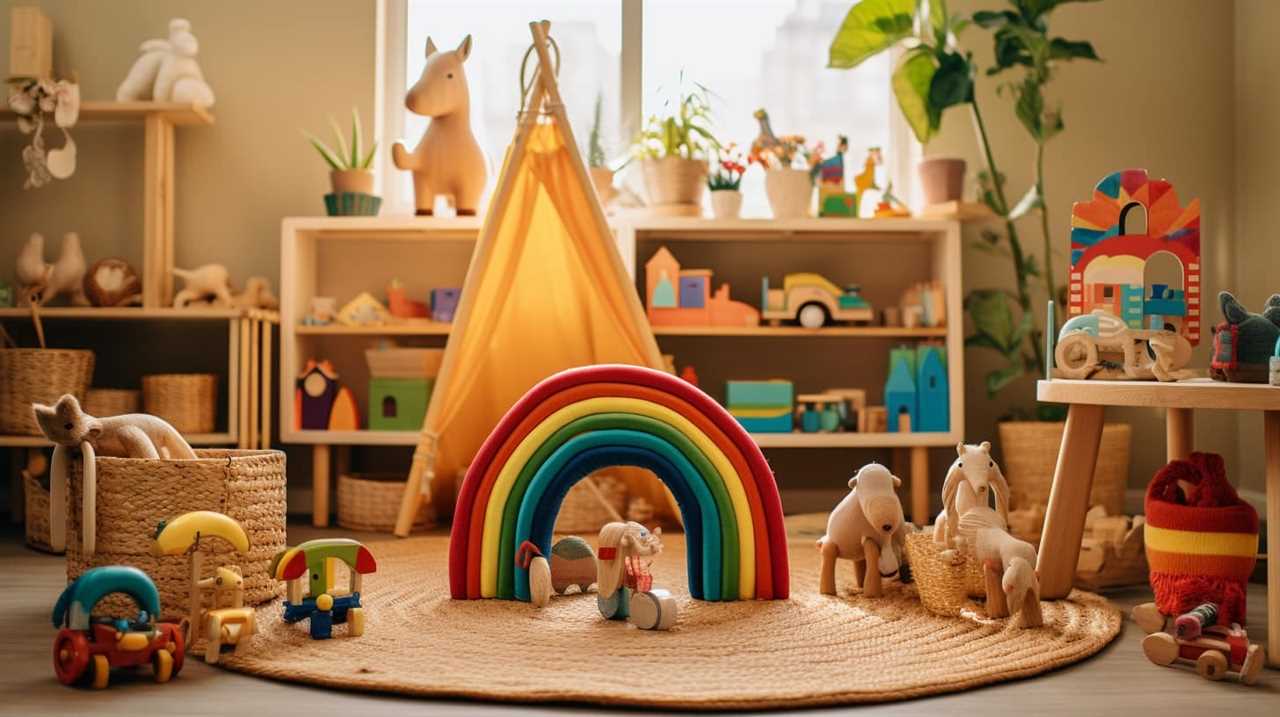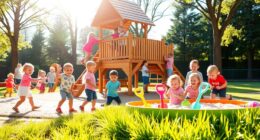- What are some alternative materials to use in children’s toys that are non toxic and safe for the environment?
- How can parents educate themselves about the potential dangers of toxic chemicals in children’s toys and make informed purchasing decisions?
As parents, our main objective is to make sure our children have the best, especially when it comes to their toys. It’s crucial that these toys are safe, free of harmful chemicals, and made with materials that promote their educational development and progress.
In this article, we will explore the world of safe non-toxic materials for children’s learning toys. From natural rubber to organic cotton and bamboo, we will discover the benefits of these materials and why they should be our top choice for our little ones.
Let’s ensure our children’s safety and well-being while they explore the world of play.
Key Takeaways
- Wooden toys are a safe and non-toxic option for children’s learning toys as they are free from harmful chemicals and toxins.
- Organic cotton is another safe material for children’s toys as it is free from pesticides and hypoallergenic, reducing the risk of allergic reactions.
- Natural rubber is a durable and non-toxic material for children’s toys that is also environmentally friendly.
- Bamboo is an environmentally friendly and strong material that can be used in the production of safe and non-toxic children’s toys.
Wood
Wood is a versatile and natural material that we often choose for our children’s learning toys. Not only is wood aesthetically pleasing, but it also offers several benefits.
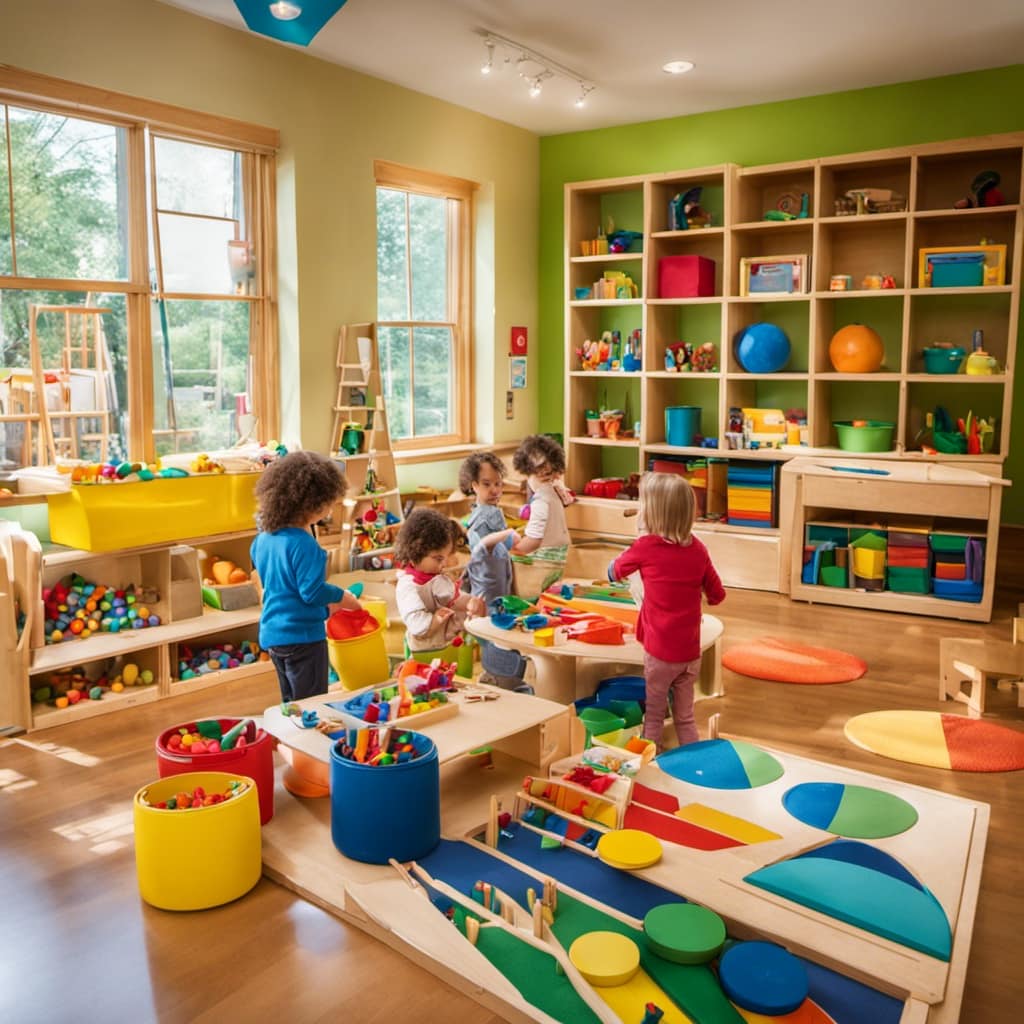
First and foremost, wooden toys are manufactured sustainably. Unlike plastic toys that contribute to pollution and waste, wood is a renewable resource that can be responsibly sourced. Additionally, wooden toys are durable and long-lasting, making them a cost-effective option for parents.
They’re also free from harmful chemicals and toxins, ensuring the safety of our children. Furthermore, wooden toys promote creativity and imagination in children, as they encourage open-ended play and problem-solving skills.
Transitioning from the topic of wood, another safe and non-toxic material for children’s learning toys is organic cotton.
Organic Cotton
One of the safe and non-toxic materials we can consider for children’s learning toys is organic cotton.
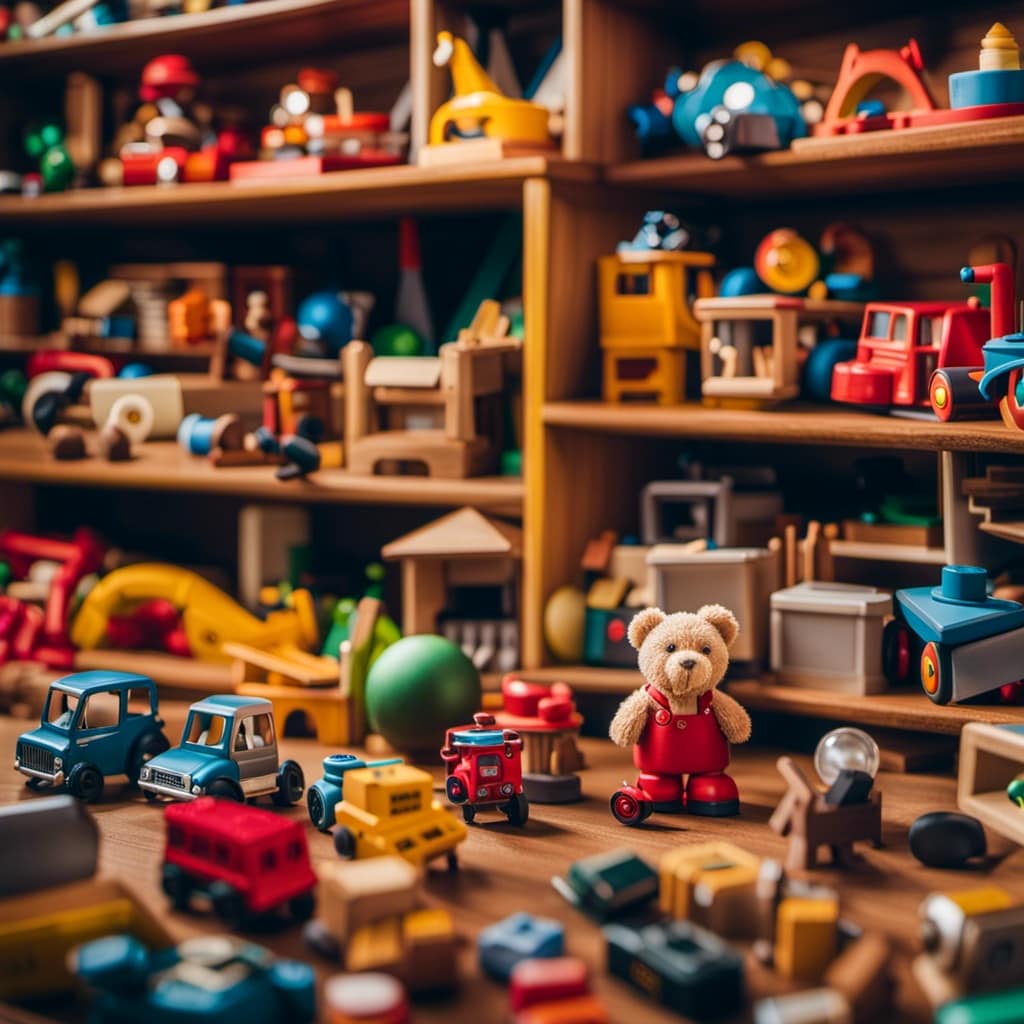
Organic cotton offers several benefits when used in toy manufacturing. Firstly, it’s free from harmful pesticides and chemicals, making it a safer option for children who may put toys in their mouths. Additionally, organic cotton is hypoallergenic, reducing the risk of allergic reactions in sensitive individuals.
Moreover, choosing organic cotton for toy manufacturing promotes sustainability. Organic cotton is grown using environmentally friendly practices that minimize water usage and soil contamination. It also supports fair trade practices, ensuring that farmers receive fair wages for their work. By opting for toys made from organic cotton, we can contribute to a healthier and more sustainable future for our children.
Transitioning to the next subtopic, natural rubber, we can explore another safe and non-toxic material for children’s learning toys.
Natural Rubber
Natural rubber is a versatile and safe material that’s commonly used in the manufacturing of children’s learning toys. It offers several benefits that make it an excellent choice for parents and caregivers who prioritize sustainability, durability, and safety.
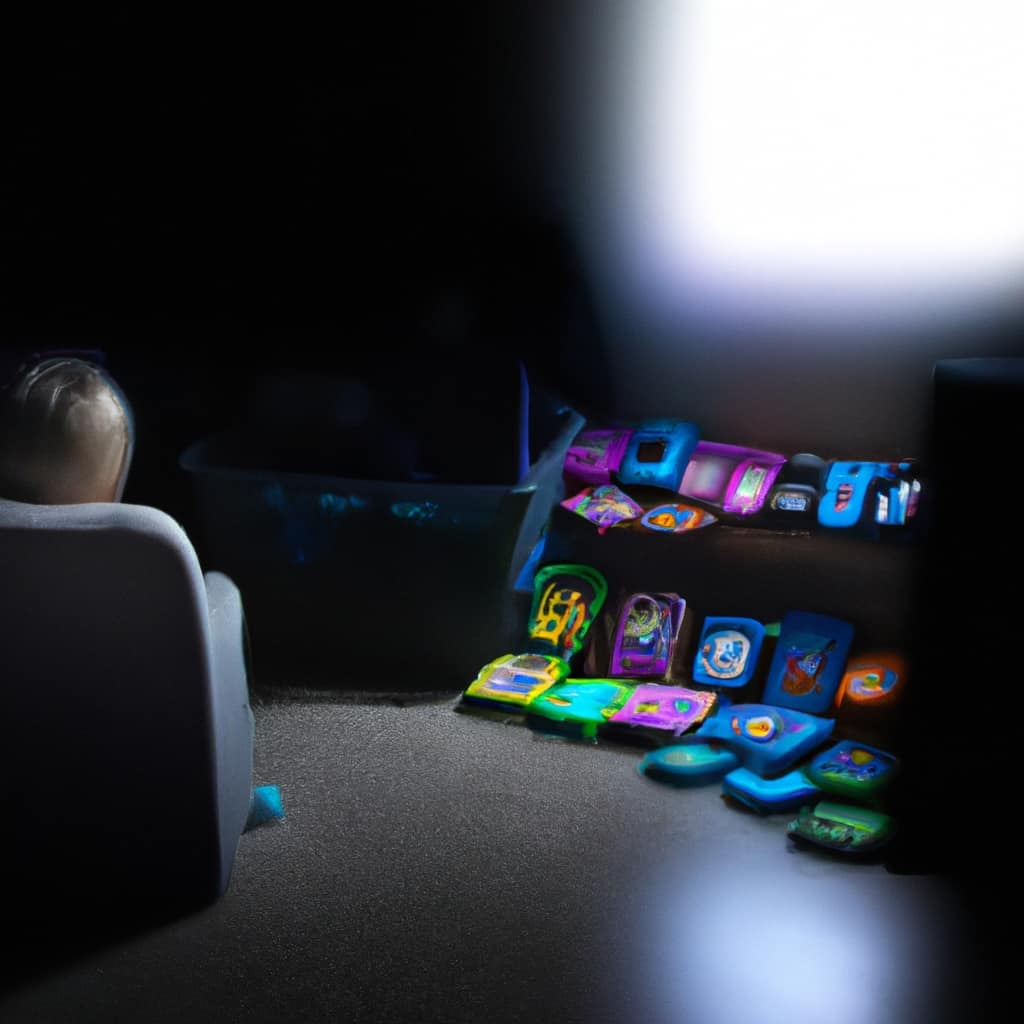
Sustainable sourcing: Natural rubber is derived from the sap of rubber trees, making it a renewable and environmentally friendly resource. By choosing toys made from natural rubber, you’re supporting sustainable practices and reducing the reliance on non-renewable materials.
Durability: Natural rubber toys are known for their durability and resilience. They can withstand rough play and are less likely to break or wear down easily. This ensures that the toys will last longer, providing children with extended playtime and value for money.
Safety: Natural rubber is non-toxic and free from harmful chemicals, making it a safe choice for children. It’s hypoallergenic and doesn’t contain any known allergens, making it suitable for children with sensitive skin or allergies. Additionally, natural rubber toys are often free from sharp edges or small parts, reducing the risk of choking hazards.
Bamboo
Bamboo is another sustainable material that offers several benefits for children’s learning toys.
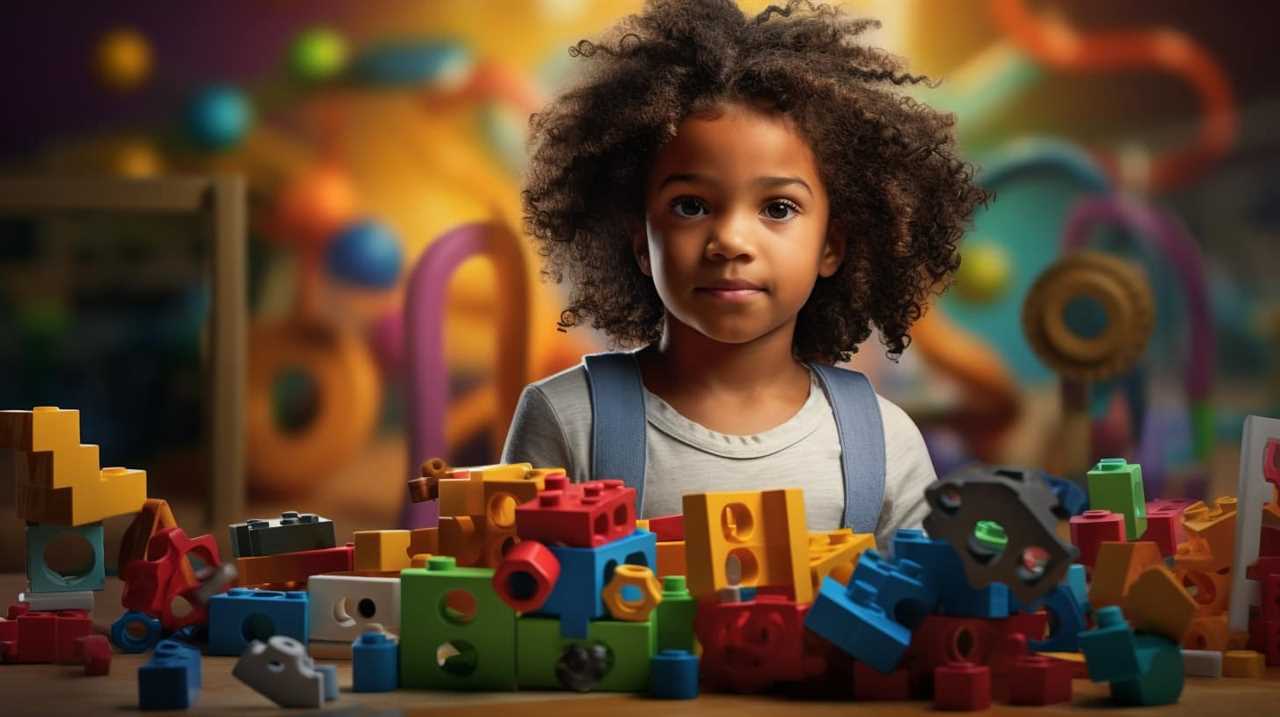
When it comes to sustainable manufacturing practices, bamboo stands out as an excellent choice. It’s a fast-growing plant that requires minimal water and no pesticides to thrive. This makes it an environmentally friendly option, as it reduces the carbon footprint associated with toy production.
Additionally, bamboo is known for its strength and durability, making it ideal for toys that can withstand rough play. Its natural texture and color also add aesthetic appeal to children’s toys.
Furthermore, bamboo is a renewable resource that replenishes quickly, ensuring a continuous supply for toy manufacturers.
Non-toxic Paints
To continue our exploration of safe and non-toxic materials for children’s learning toys, let’s delve into the use of non-toxic paints.

When it comes to painting toys, it’s crucial to choose paints that are free from harmful chemicals. Here are some options to consider:
-
Water-based paints: These paints are a great choice as they’re made from natural ingredients and don’t contain toxic solvents. They’re also easy to clean up and have a low odor, making them ideal for children’s toys.
-
DIY alternatives: If you prefer a more hands-on approach, you can make your own non-toxic paints using ingredients like flour, salt, and food coloring. There are plenty of recipes available online that are safe for children to use.
Using non-toxic paints ensures that children can safely play and interact with their toys without the worry of harmful chemicals.
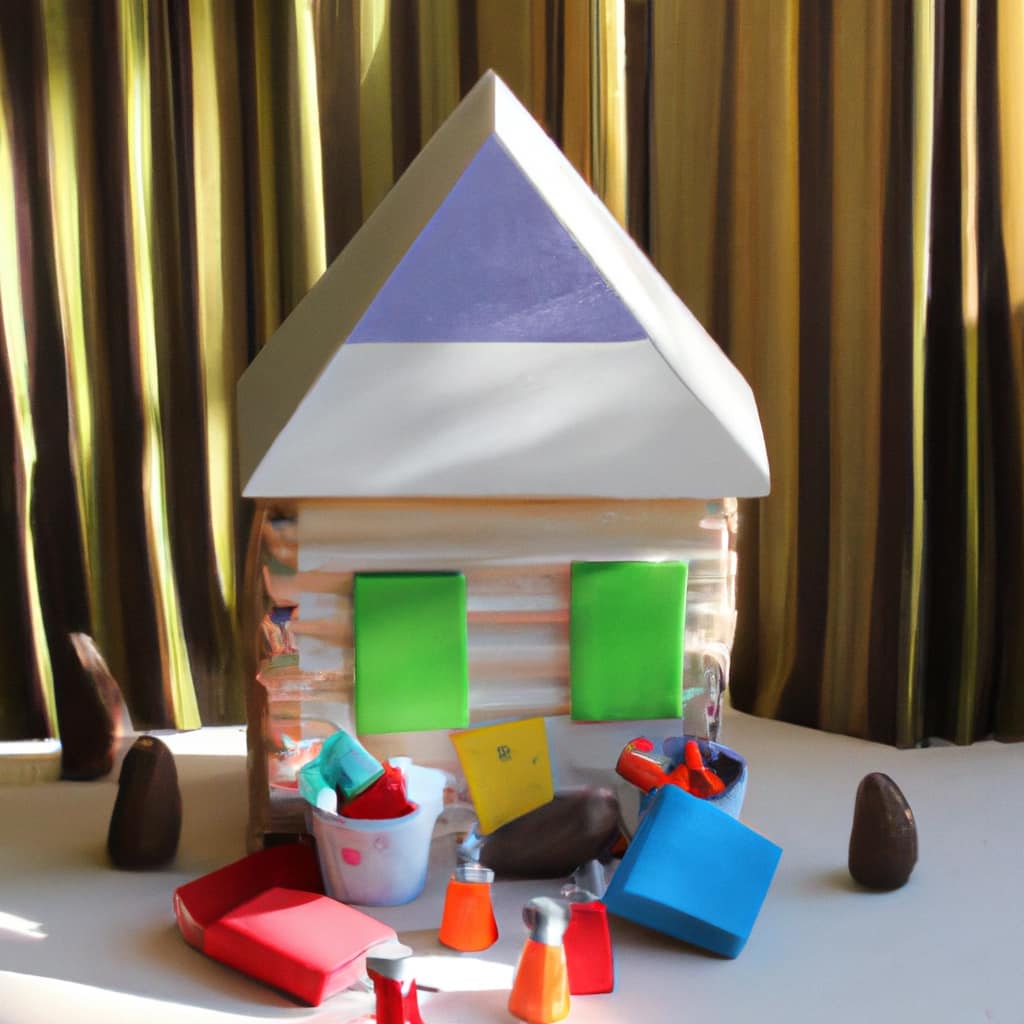
Frequently Asked Questions
Are There Any Specific Safety Certifications or Standards That Parents Should Look for When Purchasing Wooden Toys for Their Children?
When purchasing wooden toys for our children, it’s important to look for safety certifications like ASTM F963 and EN71. Non-toxic materials, such as water-based paints and natural wood, ensure their well-being.
How Can Parents Ensure That the Organic Cotton Used in Their Child’s Toys Is Truly Organic and Free From Harmful Pesticides or Chemicals?
To ensure the organic cotton in our child’s toys is truly organic and free from harmful pesticides or chemicals, we can look for third-party certifications like GOTS or OEKO-TEX, and check for labels indicating BPA-free plastic and lead-free materials.
Is Natural Rubber a Suitable Material for Teething Toys, and Are There Any Precautions Parents Should Take When Using Them?
Natural rubber is a suitable material for teething toys, but parents should take precautions. They should ensure the toy is made from 100% natural rubber, check for any potential choking hazards, and regularly inspect for wear and tear.
Can Bamboo Toys Be Easily Cleaned and Sanitized, Especially Considering Their Porous Nature?
Cleaning and sanitizing bamboo toys can be a challenge due to their porous nature. However, with proper care and maintenance, it is possible to keep them safe and germ-free for children’s playtime.

What Are Some Common Toxic Chemicals Found in Paints Used for Children’s Toys, and How Can Parents Identify and Avoid Them?
We can avoid toxic paints in children’s toys by being aware of the harmful chemicals, such as lead and phthalates. Parents should educate themselves and read labels carefully. Let’s prioritize the safety of our little ones!
Conclusion
In conclusion, when it comes to children’s learning toys, safety should always be a top priority. By opting for safe and non-toxic materials such as wood, organic cotton, natural rubber, bamboo, and non-toxic paints, parents and caregivers can ensure that their little ones aren’t exposed to harmful substances.
These materials not only provide a healthier alternative but also promote a sustainable and eco-friendly approach to playtime. So, let’s choose wisely and create a safe and nurturing environment for our children’s learning and development.





